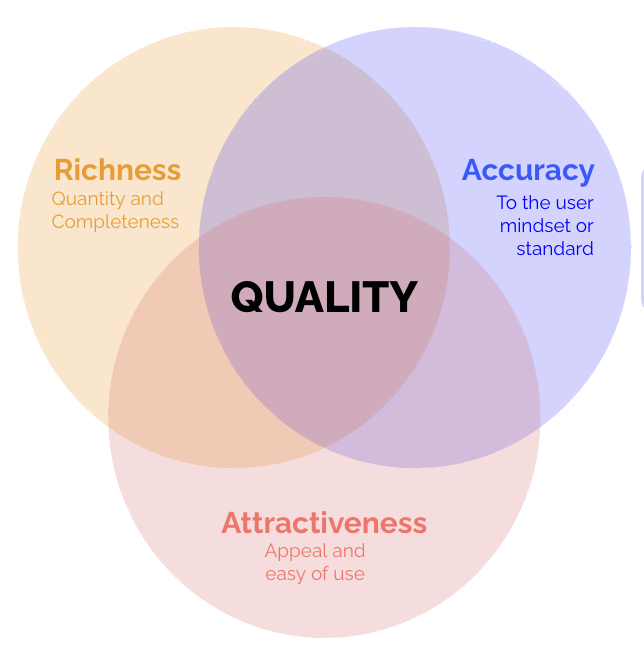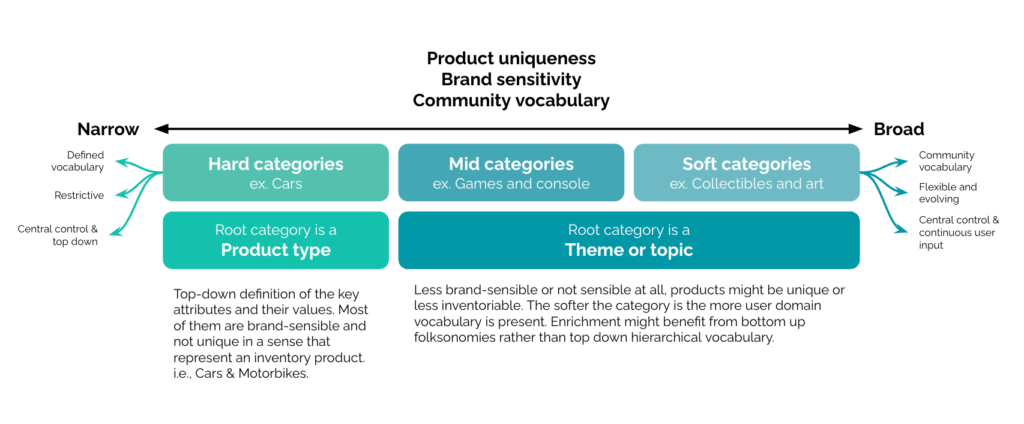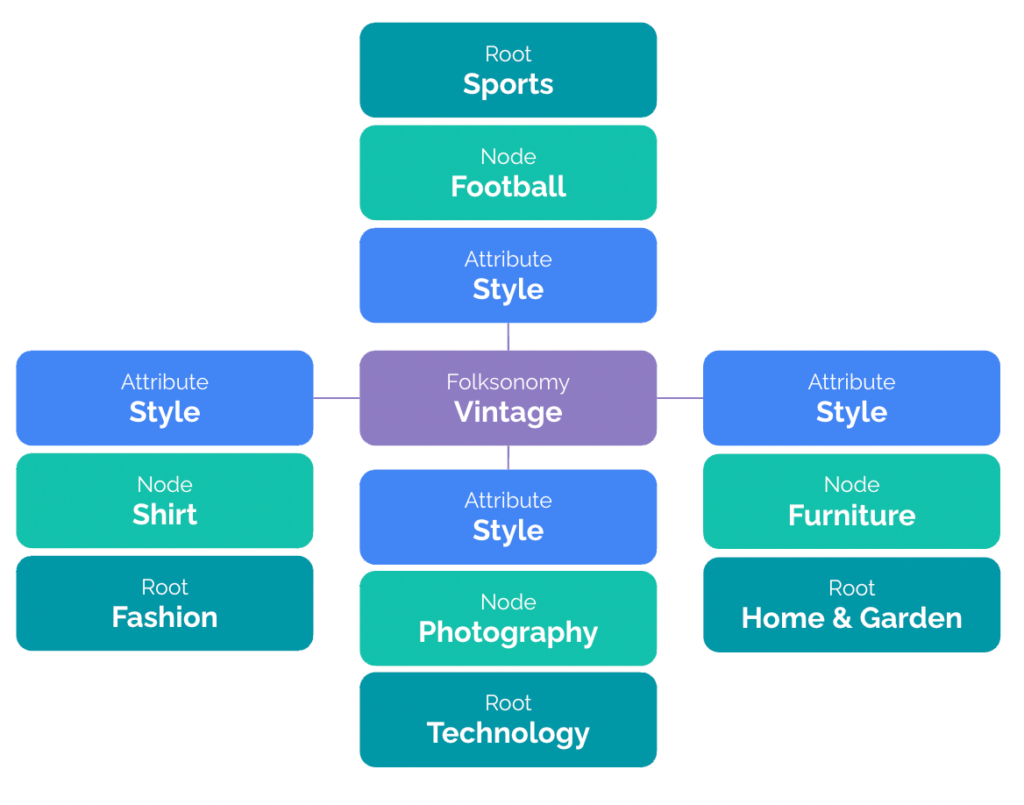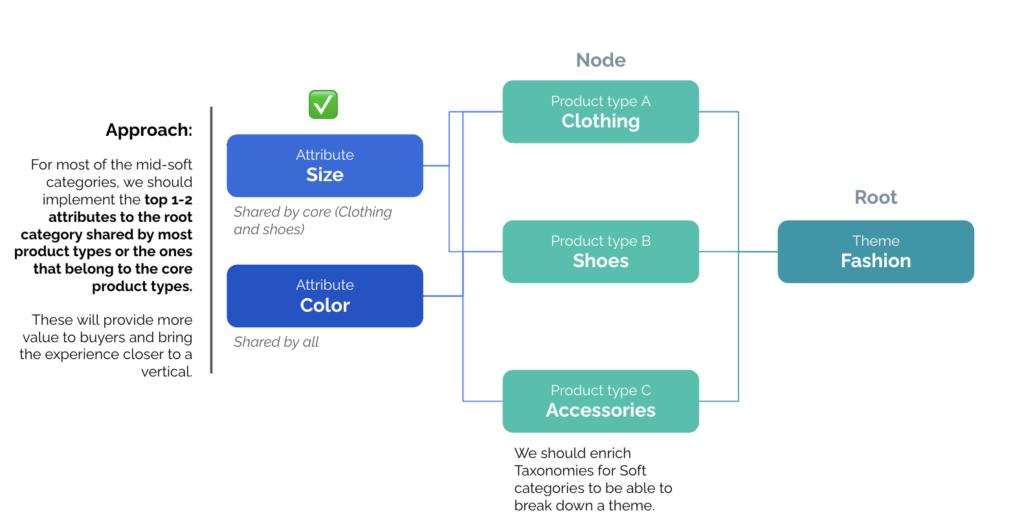As a Senior Product Designer on the Finding team at Wallapop, I took the lead on a critical initiative to elevate catalog quality—a project foundational to improving product discoverability and user satisfaction. This opportunity arose during a pivotal moment when the Product Manager was on maternity leave, leaving me to develop and drive the structure, research, and execution of the initiative. Collaborating with a junior UX Researcher, I spearheaded a comprehensive effort to rethink the catalog and its supporting systems.
Why Catalog Quality Matters
Catalog quality is a critical component of Wallapop’s marketplace strategy. A high-quality catalog directly impacts several key levers of growth:
- Search Relevance: Enriching the search algorithm with more and better signals to improve accuracy.
- Search Experience: Structured data and specific filters enable users to refine searches and enhance findability.
- Content Discovery: Better understanding of the catalog unlocks improved content recommendations and browsing experiences.
- Intermediation: Knowledge of the catalog improves post-purchase processes, reduces issues, and optimizes business operations.
- SEO Impact: A better-structured catalog architecture and enriched algorithms significantly improve SEO performance.
We framed catalog quality around three key vectors:

- Richness: Completeness and relevance of the information provided.
- Accuracy: Correctness and alignment with user expectations.
- Attractiveness: Appeal and usability of the presented information.
Achieving the right balance across these vectors ensures that the catalog delivers both a seamless user experience and business growth.
My Role
I assumed ownership of this project, leading both the strategic and tactical efforts:
- Strategic Ownership: Defined a clear structure and approach for improving catalog quality and aligning it with the broader marketplace goals.
- Research and Collaboration: Partnered with a junior UX Researcher to investigate user needs, benchmark best practices, and validate solutions.
Challenges and Problems
Wallapop’s catalog faced several challenges:
- Lack of Clear Definitions: Terms like “catalog,” “listing,” and “product” were used inconsistently, leading to misaligned strategies and inefficiencies.
- Inadequate Metadata: Key product details were either incomplete or unstructured, hampering search accuracy and filtering capabilities.
- Rigid Taxonomy: The hierarchical category structure was inflexible, making it difficult to adapt to changing product trends or user needs.
- Poor Findability and Discoverability: Users struggled to locate specific products (findability) or discover relevant ones (discoverability), affecting buyer engagement and seller success.
This journey began with an ambitious goal to refine the taxonomy by introducing new categories and subcategories. However, it quickly evolved into a multifaceted project encompassing catalog structure, metadata, facets, and findability optimization.
Redefining the Catalog Structure
To ensure clarity and scalability, I addressed the catalog’s foundational elements:
Taxonomy
A hierarchical classification system that organizes products into categories and subcategories based on shared characteristics or attributes.

We used two primary classification types:

- Themes (Soft Categories): Flexible groupings such as “Vintage,” “Refurbished,” or “Deals” that resonate with user needs and behaviors.
- Product Types (Hard Categories): Rigid groupings like “Electronics,” “Clothing,” or “Furniture” to create mutual exclusivity and navigational ease.
Metadata
The data providing descriptive, structural, and functional context for product listings, essential for improving filtering and decision-making. Metadata includes three key components:

Attributes
Defined descriptive product characteristics (e.g., color, size, brand) to support decision-making and enable filtering capabilities.

Hard Attributes
Hard attributes refer to the tangible, measurable, and objective characteristics of a product. These attributes are often physical properties that can be easily quantified, categorized, and directly observed.

- Basic Identification: Hard attributes provide the basic information that allows users to identify and differentiate products. For example, knowing the brand and color of a product is fundamental to recognizing what it is and whether it fits the user’s needs.
- Comparative Value:Hard attributes are crucial for making direct comparisons between similar products. They allow users to evaluate options side by side based on tangible, measurable criteria.
- Decision-Making:Hard attributes provide the practical details necessary for users to make informed decisions. They answer essential questions like “Will this fit?” or “Is this made from the material I prefer?”
Usage:
- Filtering: Hard attributes are frequently used in filtering because they provide clear criteria that users can select to narrow down search results.
- Comparisons: These attributes allow users to make direct comparisons between similar products, helping them choose based on specific needs or preferences.
Soft Attributes
They refer to the more subjective, qualitative, and often context-dependent characteristics of a product. These attributes are not always directly measurable and are often related to the product’s uniqueness, emotional appeal, or special features. They tend to carry additional meaning or value beyond the product’s basic functionality.

- Enhanced Attractiveness: Soft attributes add an additional layer of value or appeal, often related to the uniqueness or emotional connection to the product. However, they are typically supplementary to the core information provided by hard attributes.
- Context and Differentiation: Soft attributes help differentiate products that may be similar in their hard attributes by adding context or highlighting special features. However, without the foundation of hard attributes, these soft attributes lack the necessary context.
Usage:
- Recommendations: Soft attributes are often more valuable in recommendation engines because they align closely with user preferences, tastes, and emotional connections to products. They help in surfacing items that resonate with the user’s interests and values.
- Discovery: These attributes enhance the discovery experience by highlighting unique or special products that users might not have specifically searched for but would find appealing based on their behavior and past interactions.
Facets
To overcome the rigidity of traditional taxonomy, we implemented facets—a transversal classification system that allows items to exist in multiple dimensions without altering their primary category:

Parameters
Characteristics related to convenience which are commonly used as search parameters (ex. location, price, shipping availability).

Restructuring Key Categories
We applied a structured and iterative approach to reorganize Wallapop’s most important categories. Working in close collaboration with a junior UX Researcher, we ensured the process was both data-driven and user-centric. This approach was designed to address both hard and soft categories, leveraging insights from users, sellers, and experts to create a taxonomy that aligned with business opportunities and user needs.

Outcomes
- Technology: Merged consoles, video games, computers, and smartphones into one Technology vertical to streamline navigation and support business opportunities like refurbished products.
- Fashion: Added several new subcategories, improving product allocation for sellers while reducing miscategorization and enhancing findability.
- Movies, Books, and Music: Restructured subcategories to align with user-centric classifications, maintaining Wallapop’s leadership in this vertical.
- Home and Garden: Expanded subcategories to highlight Wallapop’s variety and help sellers allocate items more effectively.
- Sports: Similar to Home and Garden, enriched with subcategories to improve both seller and buyer experiences.
impact
The restructuring of key categories delivered measurable results:
- 30% Reduction in Miscategorization: Buyers experienced more relevant search results, and sellers found it easier to categorize their products.
- Scalable Framework: Established a flexible taxonomy adaptable to trends, boosting Wallapop’s ability to support new verticals like refurbished products.
Enriching Metadata for Key Categories
To address the challenges of decision-making and findability on a horizontal platform, our first step was to enrich metadata with Hard Attributes. This approach ensured simplicity and scalability by focusing on the most impactful attributes that align with the core product types or categories, avoiding unnecessary complexity while delivering value to users.

We enriched metadata in three core verticals to enhance filtering and decision-making:
- Technology: Introduced attributes like brand, storage capacity, and condition, enabling users to refine searches and make informed decisions.
- Movies, Books, and Music: Added attributes like genre, format, and condition to improve search precision and relevance.
- Home and Garden: Expanded attributes to accommodate the category’s variety, helping users filter by material, size, and style.
Impact
- Increased Conversion Rates: Listings enriched with attributes showed a 5% higher conversion rate, as buyers were able to make quicker, more informed decisions.
- Adoption of Filters: Filter usage grew significantly, with a 25% adoption rate, and filters with enriched attributes achieved a high success rate, reducing time-to-purchase for buyers.
Key Learnings
The Catalog as a Dynamic Ecosystem
The catalog is more than just a collection of listings; it’s a living structure that must continuously adapt to meet evolving user needs, industry trends, and business objectives.
Holistic Approach is Essential
Integrating taxonomy, metadata, facets, and user-centric design is key to creating a catalog that is not only scalable but also intuitive for both buyers and sellers. Each element works together to improve decision-making, reduce miscategorization, and enhance the overall user experience.
Balance Between Simplicity and Functionality
A streamlined catalog structure that balances simplicity with the right level of detail is critical in maintaining usability while maximizing findability and decision-making support for users.
Impact on Business and User Experience
A well-structured catalog not only improves user satisfaction but also creates opportunities for business growth, such as leveraging vertical-specific strategies (e.g., refurbished products) and increasing conversion through enriched filtering capabilities.
